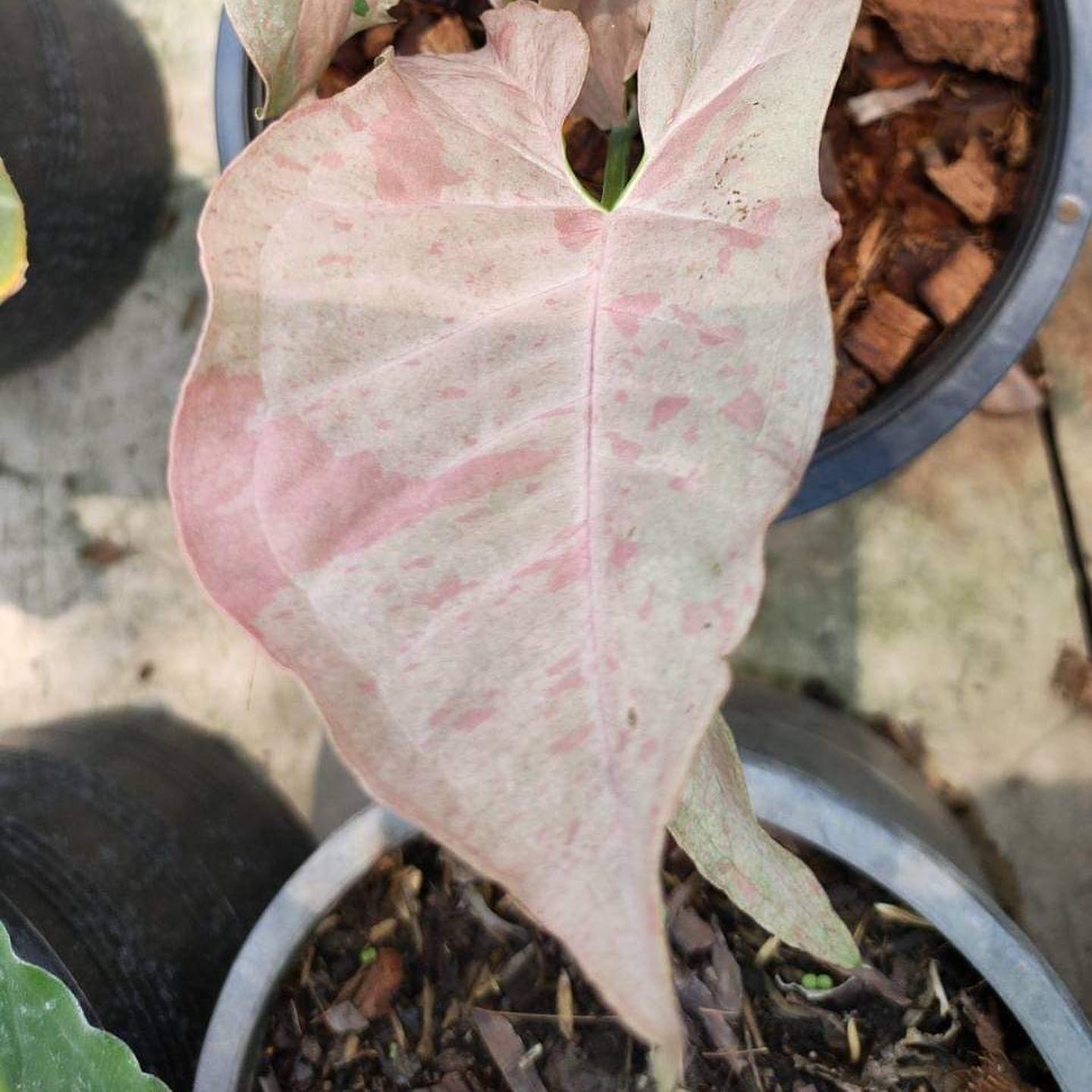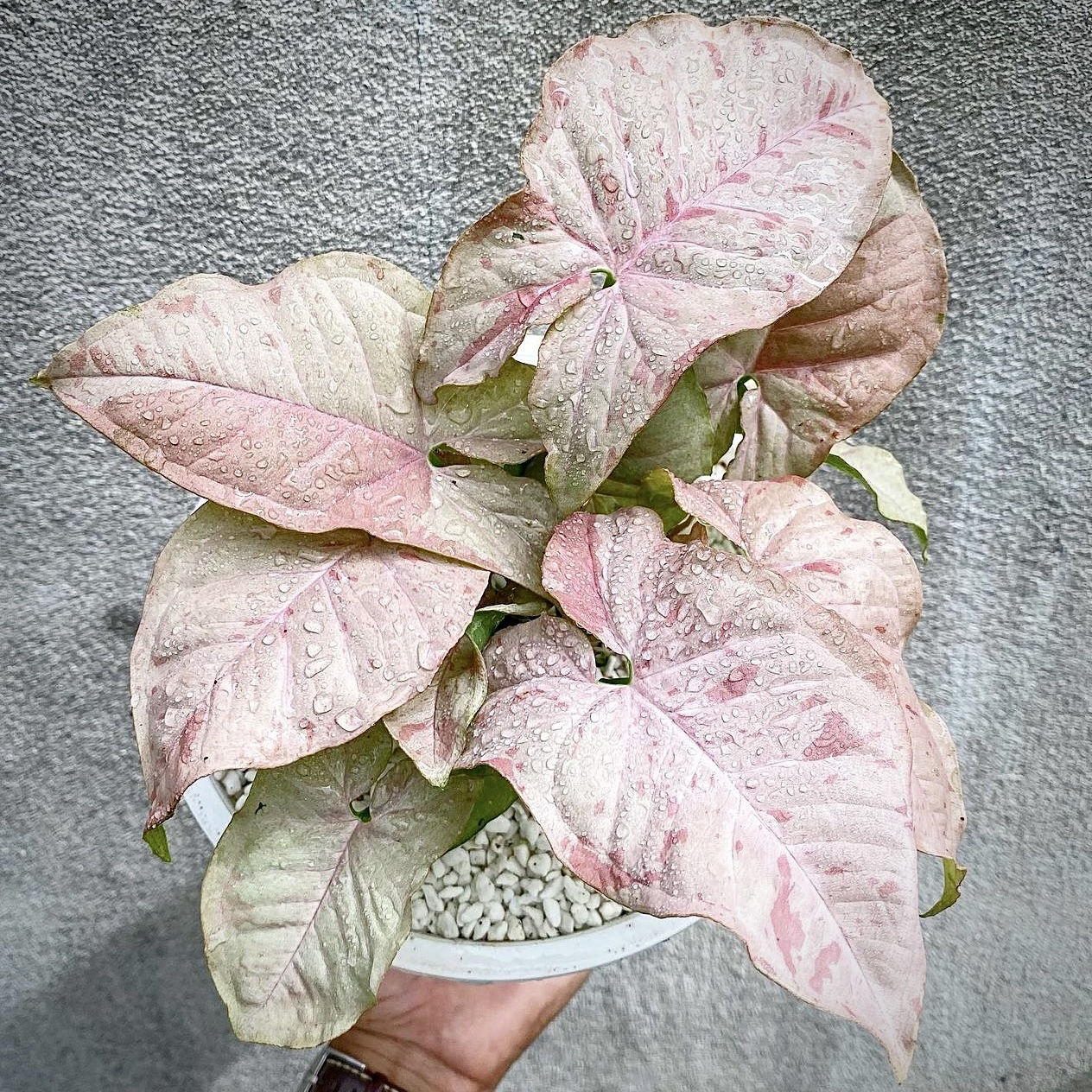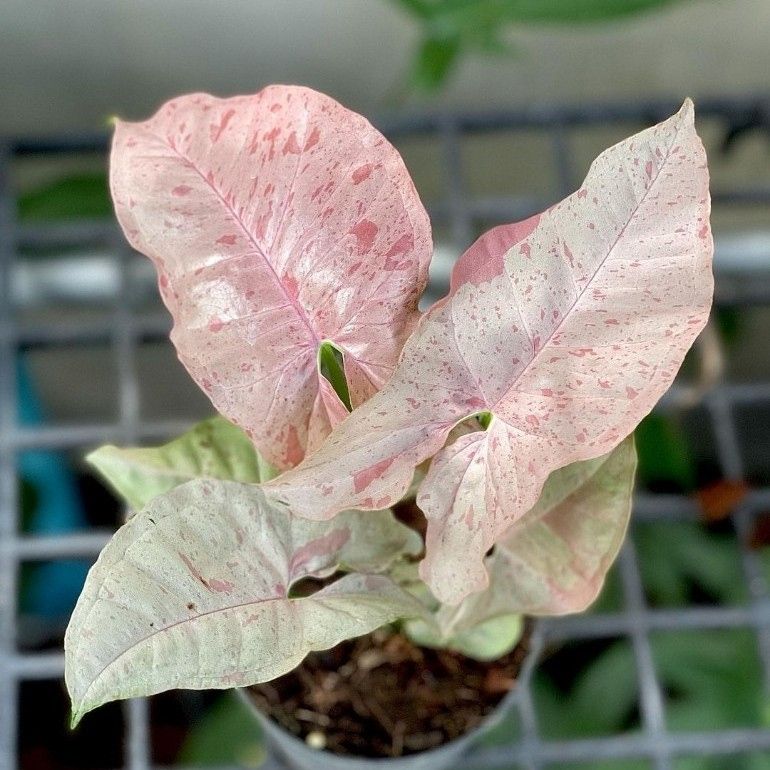Understanding Syngonium Pink Spot: A Comprehensive Guide
Introduction to Syngonium Pink Spot
Syngonium Pink Spot, a head-turner in the botanical world, has gained significant attention among houseplant enthusiasts. Known for its captivating foliage and ease of care, this plant is a vibrant addition to any indoor green space.

Origins and History
Early Beginnings
Tracing the roots of Syngonium Pink Spot takes us to the lush tropical rainforests of Central and South America, where its wild relatives still thrive. Adapted to the dense undergrowth and shady conditions, these plants evolved distinct characteristics that later would fascinate botanists and plant collectors.
Modern Cultivation
Today, Syngonium Pink Spot is cultivated worldwide, cherished for its aesthetic appeal and relatively low-maintenance needs. Its global popularity testifies to the plant's adaptability and the shared human penchant for natural beauty.
"To explore more about the rich history and origins of Syngonium varieties, delve into our Syngonium Overview."
Characteristics of Syngonium Pink Spot
Appearance
The Syngonium Pink Spot's claim to fame is its unique leaves - glossy, arrow-shaped foliage speckled with striking pink spots and margins. The vibrant contrast between the deep green and pink hues makes it a standout in any plant collection.
Growth Habits
As a relatively fast-growing plant, Syngonium Pink Spot can adapt to various growing conditions. It exhibits a climbing or trailing growth habit, making it suitable for hanging baskets or as a stunning climbing vine.

"Unleash the beauty of nature in your home! Click now to embrace elegance with the exquisite Syngonium Pink Spot. Don't miss out - transform your space today!"
Care and Maintenance of Syngonium Pink Spot
Watering Needs
Syngonium Pink Spot enjoys a good drink, but it's vital to avoid waterlogging the soil. The 'soak and dry' method works best - water thoroughly, then let the top inch of soil dry out before watering again.
Lighting Requirements
While tolerant of various light conditions, Syngonium Pink Spot flourishes under bright, indirect sunlight. Too much direct sunlight can cause leaf burn, while too little can lead to lackluster growth.
Soil and Fertilizer Preferences
A well-draining soil mix that mimics its natural forest floor habitat will keep your Syngonium Pink Spot happy. Regular feeding during the growing season with a balanced houseplant fertilizer will support robust growth.
"Find extensive care instructions for your Syngonium Pink Spot in our detailed guide on Syngonium Care."
Propagation Techniques
Syngonium Pink Spot can be propagated via stem cuttings or division, making it easy for enthusiasts to multiply their collection or share with fellow plant lovers.
"Learn effective propagation methods for Syngonium Pink Spot in our step-by-step guide, Syngonium Propagation: Easy Steps to Multiply Your Syngonium."
Potential Challenges and Solutions
Common Pests
While generally pest-resistant, Syngonium Pink Spot might sometimes attract common houseplant pests like mealybugs or spider mites. Regular checks and prompt intervention will keep your plant healthy.
Disease Management
Overwatering or poor ventilation can lead to fungal diseases. It's vital to maintain proper watering practices and ensure good airflow around your Syngonium Pink Spot.

The Benefits of Growing Syngonium Pink Spot
Apart from its ornamental appeal, Syngonium Pink Spot also purifies indoor air, making it not just a delight to the eyes but also a boon for health.
Conclusion
Cultivating Syngonium Pink Spot adds a unique aesthetic appeal and sense of tranquility to any space. Its easy-going nature, coupled with captivating foliage, makes it an irresistible choice for indoor plant enthusiasts.
Frequently Asked Questions
- Is Syngonium Pink Spot toxic to pets?
- Yes, it can be harmful if ingested by pets.
- Can Syngonium Pink Spot grow in low light?
- It can tolerate low light but thrives best in bright, indirect light.
- How often should I repot my Syngonium Pink Spot?
- Generally, repotting every 2-3 years should suffice.
- Can I grow Syngonium Pink Spot outdoors?
- Yes, but it should be protected from extreme weather conditions.
- Why are the leaves on my Syngonium Pink Spot turning yellow?
- Overwatering, insufficient light, or nutrient deficiencies could cause this.
https://bit.ly/4bmqLrx
Nhận xét
Đăng nhận xét